Eight Wonders of Port Aransas
Self-Guided Tours
1. The Lighthouse
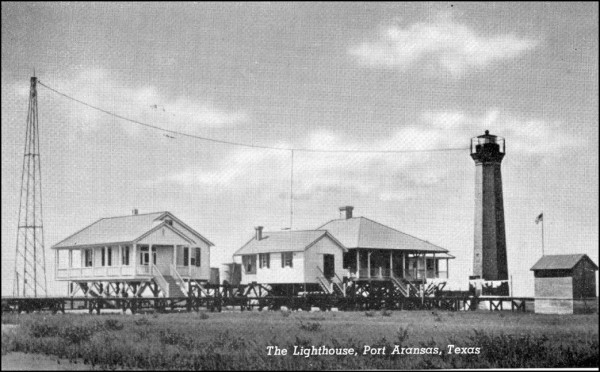 The history of the Aransas Pass Light Station was driven primarily by weather and politics, both powerful forces of change. In order to spur development of the area, local movers and shakers wished to establish a seaport on the pass and needed a light to mark the area. Many ships and lives had been lost in attempting to come through this sometimes treacherous pass, and it was obvious that changes needed to be made if the area was to be a successful port.
The history of the Aransas Pass Light Station was driven primarily by weather and politics, both powerful forces of change. In order to spur development of the area, local movers and shakers wished to establish a seaport on the pass and needed a light to mark the area. Many ships and lives had been lost in attempting to come through this sometimes treacherous pass, and it was obvious that changes needed to be made if the area was to be a successful port.
Initial planning pointed out the fact that the pass was shifting rapidly to the south, and thus a movable light, either a buoy or light ship, made more sense than a brick-and-mortar structure here. Some local and national forces, however, wanted a permanent structure, and they won out.
Construction started in 1854, and the tower was first lighted in 1857. Mounted in the lantern at the top of the tower was a fourth-order Fresnel lens, which made the light visible seven miles out at sea. This lovely little brick tower lit the way into our pass for the next 99 years before being abandoned by the United States Coast Guard.
The tower was re-lit in 1989 by a new private owner, and now once again is the only light house marking our section of the coastline.
In 1862 the American Civil War erupted and the station became the target of Confederate forces. In a daring raid, they set off two kegs of black powder, destroying the lens and damaging the tower. The Station was repaired and re-lit using a new fourth-order lens in 1864.
Now forces of weather took their turn, and the original houses were destroyed by the 1916 hurricane. These were replaced by a single large house, the one you see next to the tower, which was finished just in time for the 1919 hurricane, a real destroyer that laid waste to Port Aransas. This immensely strong and beautiful building survived that massive test and stands today as a testament to proper construction.
It stood alone until the 1920s when the small north house, partially hidden behind the tower, was built in two stages. The front half was finished around the time of the opening of the Corpus Christi Ship Channel (politics again) to allow for one more assistant keeper and family. The small shop building, just next door to the main house, was added during this same period.
Politics again, the back half of the north house and the keeper’s house on the south end of the walkway, were built in 1940 when the United States Light Service was dissolved, and the United States Coast Guard took over all the light stations in the country.
And finally, finances won the day when the Coast Guard decided to abandon the station in 1954; it was just too expensive to maintain. By this point the pass had shifted southward over a mile before being captured by the Jetties.
2. The Jetties
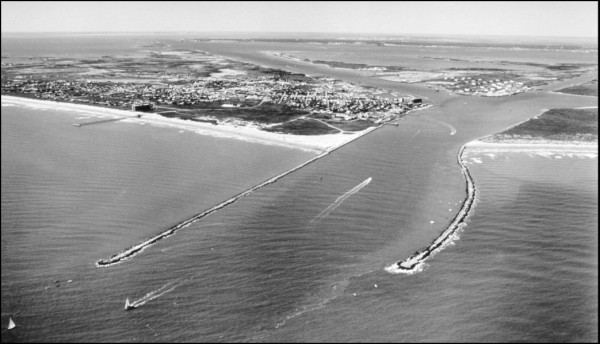
It would take five attempts and 50 years to finally bring it to a halt.
In 1862 a group of local businesspeople raised money and had a rock wall constructed on the south side of the channel to prevent further movement. It lasted less than two years and the pass rolled right over it. The ocean is a tough opponent!
Next attempt was by the Army Engineers in 1870. This effort, led by a very competent man named Mansfield, consisted of a single jetty on the south side of the channel. This slowed the restless pass’ southward movement down to about 70’ per year…a significant gain.
Major Mansfield strongly suggested to the Engineers that a second jetty be built immediately on the north side of the pass to capture it forever. He was ignored.
Over the ensuing years the pass shifted slowly south, and the Mansfield jetty began to deteriorate due to lack of maintenance. The next team to try to stop the pass was a private group. They raised a lot of money by selling land which was to become a new city by the sea alongside the jetties and started work. They hired a professor of engineering to design their new jetty and he produced what he called a “Reaction Breakwater” that would, by itself, solve their problem and thus cut their costs in half.
This new jetty would be built in an S curve along the North side of the pass. It did not work, and they went broke.
Now we had a real mess…there were two structures nearly intersecting in the middle of the channel and traffic was all but blocked.
The Government stepped in again, determined to finish the job this time. They hired a brilliant engineer named Picton, from Rockport, whose company altered the S curve jetty and built a brand new one on the south side of the pass, capturing it forever.
Work was finally finished in 1910 and the town changed its name from Tarpon to Port Aransas.
3. The Tarpon Inn
200 East Cotter Ave, Port Aransas
Built in 1886, the Tarpon Inn is the oldest surviving structure on our island. This hotel was built during the final phase of construction of the Jetties. It has become the icon of our waterfront and appears in thousands of photos.
It was badly damaged in a fire, nearly destroyed by a severe hurricane, but keeps on coming back to life. You can still book a room and enjoy a fine meal there in the shadow of all that history.
A stop inside the lobby is a must. Nowhere else in the world will you find this unique wall covering — tarpon scales signed by those who caught them line the walls. On the back wall is a very special scale signed by President Franklin Delano Roosevelt.
While you are there, have a drink at Roosevelt’s, the restaurant and bar in the courtyard.
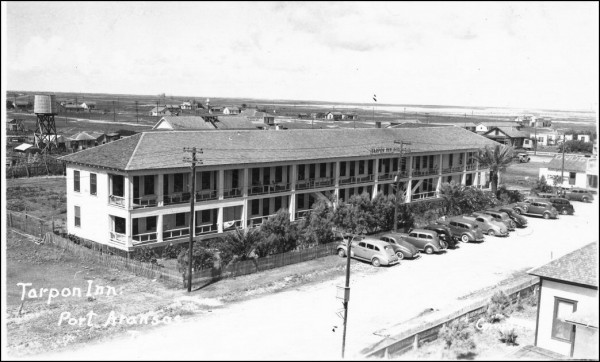
4. The University of Texas Marine Science Institute
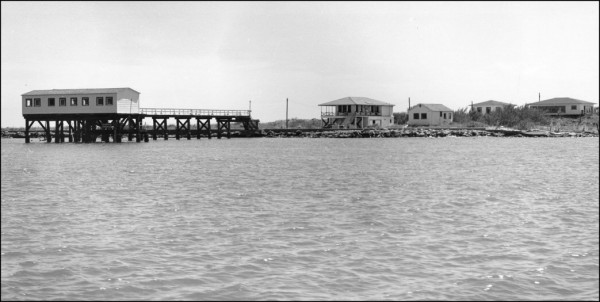
Established in 1941, this institution brought advanced science to our island. Thousands of scientists have been trained here to push the envelope of marine science forward.
The institute now houses the National Estuarine Research Reserve, Mission Aransas (NERR). The Mission-Aransas Reserve is a large, contiguous complex of wetland, terrestrial and marine environments named for the two river systems that flow into it. The Reserve’s 185,708 acres is representative of western Gulf estuaries. Its extensive public and private lands include coastal prairie, oak motte, riparian, freshwater and salt marsh habitats.
UTMSI houses the Animal Rehabilitation Keep (ARK) — and conducts undergraduate, Masters and Doctoral classes. Port Aransas is blessed to have this prestigious and important program here.
5. The Port Aransas Museum
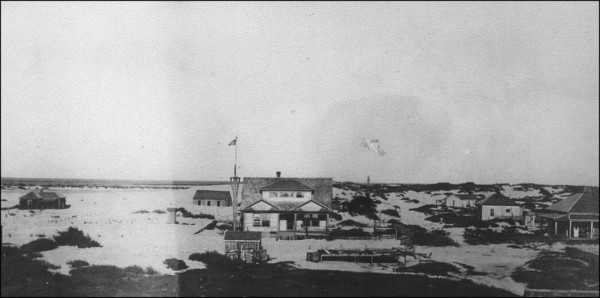
Open in 2008, the speed with which the museum came to be is truly a wonder. It went from an idea to open house in less than three years.
The building that houses the museum was brought to the island as a kit house circa 1915 or 1916. After the hurricane of 1916, it was used as a replacement for the Life Saving Station (now Coast Guard) building that was wiped out by that terrible storm.
The new Coast Guard station opened in 1925. The kit house was then sold into the private sector in the 1930s. It was moved and became the home of several prominent Port Aransas families over the ensuing 70-plus years. The last family to own it — the Morrisons of San Antonio — donated the fine old structure to the Port Aransas Preservation and Historical Association to become a museum for our town.
PAPHA moved it for at least the third time in its very eventful life. The history of this venerable old house is a big and significant part of the history of our island town.
Step inside and revisit our island history through pictures, exhibits and movies. Watch Farley boats fishing, see the President of the United States catch an 80-lb tarpon and watch folks playing on the beach in the 1920s.
Admission is free, but please leaves us a donation to help preserve the history of our island town. Join PAPHA and receive our monthly newsletter and other wonderful benefits.
6. Farley Boat Works
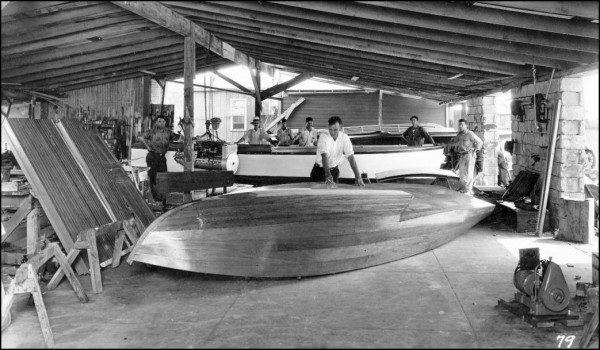 716 W Ave C, Port Aransas
716 W Ave C, Port Aransas
What a history this institution has. The Farley family arrived here in the 1880s and established homes and a business. An early member became the town’s first taxidermist and provided specimens from our area to the Smithsonian Institution.
In 1915, some new Farleys arrived and opened our first boat shop. It would last uninterrupted until 1970. Farley Boats were the nautical icon of our island. Everyone, including the president of the United States, fished from one of these fine tarpon skiffs.
No one knows how many boats the Farley shop turned out, but it numbered in the high hundreds at least. Their boats were designed and built specifically to meet the local conditions and were ideal for the job.
When the City of Corpus Christi took away our port, we fell back on sport fishing to survive, and the Farleys became even more important to our future. They would build you a boat.
Step inside and see a pictorial history of our dependence on the sea and a chronicle of the Farley builders alongside a preserved 1930s tarpon skiff, the Tina. The Port Aransas Museum re-established the Farley Boat Works in 2011, where boats are once again being born. If you wish to build one yourself, sign up and our team will guide you through the process. You will then have built your own Farley boat.
7. Chapel in the Dunes
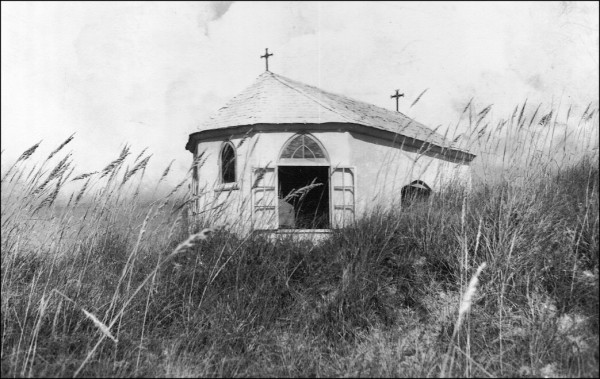 207 11th St, Port Aransas
207 11th St, Port Aransas
Nestled on the top of the highest dune in Port Aransas is a beautiful tiny chapel.
It was built in 1937 by Aline Carter. Soon it became the center for Sunday ice cream socials for the kids of the town. Mrs. Carter, who wore long white dresses, was given the nickname “the Angel lady” by the children.
Mrs. Carter was a remarkable person in many ways. She wrote two books of poetry, both of which are available at the Port Aransas library — and was Poet Laureate of Texas from 1947 through 1949. She built an observatory in the upper floor of her house in San Antonio, from which she taught astronomy to hundreds of children.
In the 1970s, Texas artist John Cobb was inspired by her memory to paint the ceiling of the little chapel, depicting scenes from the Bible. He mixed his own Gesso and painted in the ancient manner, practically living in the chapel during this three-year labor.
The Port Aransas Museum now conducts tours of the Little Chapel, and the Carter family grants occasional permission to people wishing to be married or hold special church services here.
8. The Last Farley Boat
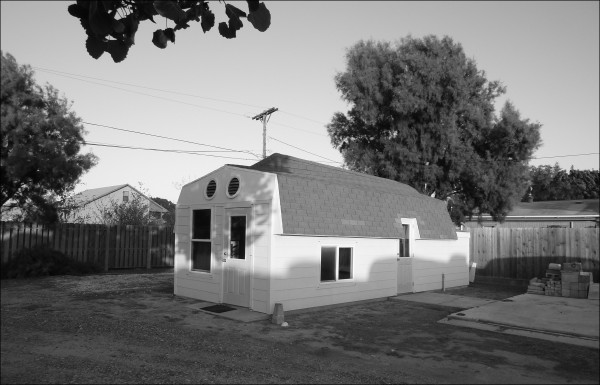
This may be the strangest Port Aransas wonder!
The last boat to leave the Farley Boat Works building in 1972 is right in front of you ─ but may be a bit difficult to see.
Maybe some history will help. The Farleys sold their business to Steve Janovski. He started this boat and finished the hull, but then found it impossible to keep the shop open and shut the doors.
Mr. James Mayfield, a local bait shrimper, bought the hull intending to finish it and use it as a charter boat. He never got around to it and one day, needing a shop, he hatched the idea of making the nearly finished boat into a unique roof.
See it now? All the intricate and strong mahogany framing still live under the shingles ─ and the shape of the last boat, now upside down, forms the strangest roof in Port Aransas.
